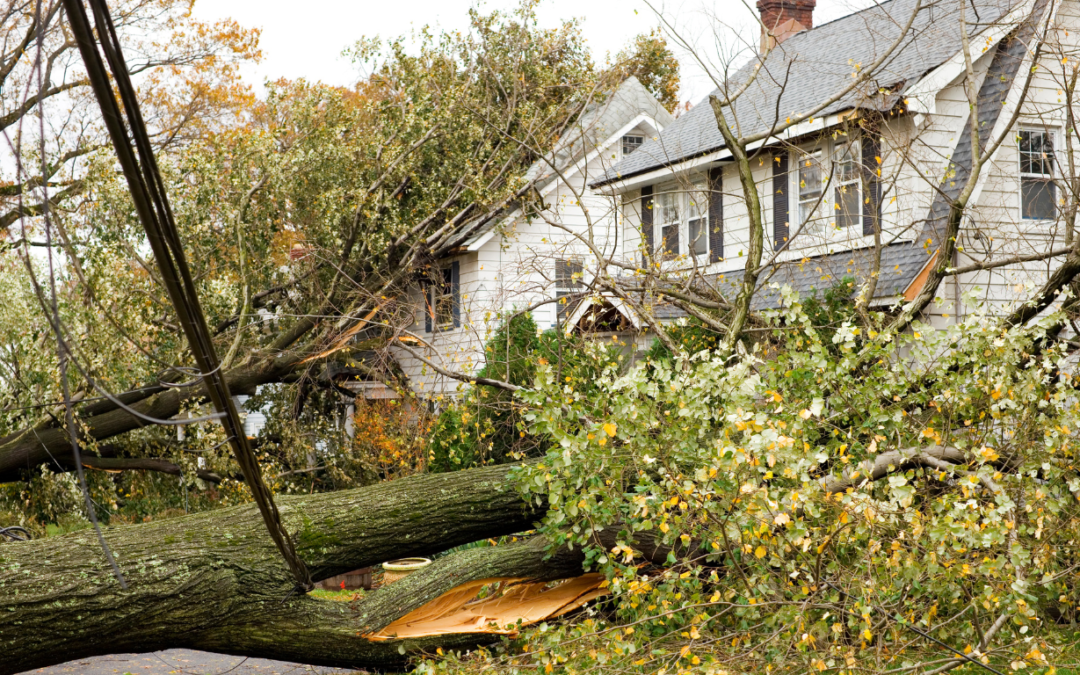By Mohammad Alkhatib
On July 8, 2024, Hurricane Beryl swept through Texas, leaving approximately 2.2 million Houston-area customers without power. Although CenterPoint Energy was able to restore power to 1 million customers within 48 hours, the process was not completed until a full two weeks later. The widespread outages underscore the need for a more resilient energy grid. As extreme weather events become more frequent, Texas must look toward smart technologies—specifically smart inverters—to protect its power infrastructure and mitigate the impact of hurricanes and other disasters.
Inverters are one of the most important pieces in a solar power system. Their task is to convert the direct current (DC) created by solar panels into an alternating current (AC) that can be used by homes, businesses, appliances, and the power grid. Smart inverters are a newer technology that performs the same basic function but goes beyond it by using “smart” technology to optimize its grid support capabilities, such as voltage regulation, frequency support, and ride-through capabilities, as well as enhance solar system efficiency. These features allow smart inverters to play a critical role in maintaining grid stability during extreme weather and ensuring that power systems remain functional, even during disruptions.
By incorporating these advanced functions, smart inverters can respond dynamically to grid disturbances caused by storms, preventing issues like voltage drops and blackouts. Their ability to regulate voltage and maintain grid frequency during a storm helps avoid cascading power failures. This makes them a vital tool not just for ensuring power during extreme weather, but also for aiding post-disaster recovery, allowing communities and critical infrastructure to restore power more efficiently.
Building a More Resilient Grid with Smart Inverters
Islanding capability is one of the primary features of smart inverters that will resonate most with individual homeowners. When the grid goes down, these inverters can shift into a grid-forming mode, allowing them to operate independently and create localized power islands within a home. This ensures that essential appliances, such as refrigerators and lights, can keep running even when the broader grid is offline. This capability is particularly beneficial for homeowners who want backup power without investing in an expensive battery system. By relying on solar energy alone during the day, smart inverters can keep these key systems operational without the need for additional storage.
For those looking to further enhance their home’s resilience, pairing smart inverters with battery storage systems can amplify their functionality, allowing homeowners to maintain power during both short and extended outages. This is a valuable option for families who need continuous power for essential services like medical equipment or communication devices.
Smart inverters can also support critical community services like hospitals and emergency response facilities. In events like Hurricane Beryl, where millions of Texans lost power, smart inverters on existing solar systems could have enabled neighborhoods and key services to maintain power independently while the rest of the grid was being repaired.
Smoother Transitions and Faster Recovery
In addition to keeping critical systems running, smart inverters ensure a seamless transition when the main grid goes offline. By managing energy flow from battery storage systems, smart inverters prioritize essential loads, allowing homes to keep running crucial systems like refrigeration, medical equipment, and lighting during blackouts.
This level of control could have significantly sped up recovery efforts after Hurricane Beryl. Instead of waiting for the entire grid to be restored, sections powered by smart inverters could have kept functioning, relieving stress on CenterPoint Energy and other utilities, while simultaneously protecting vulnerable populations from the harshest effects of the outage.
Enhancing Grid Stability and Microgrid Functionality
Smart inverters also provide frequency and voltage regulation during times of instability, such as those experienced during hurricanes and their aftermath. They prevent further grid complications, like cascading blackouts or brownouts, by balancing grid fluctuations. For example, after Hurricane Beryl, smart inverters could have stepped in to stabilize the grid and maintain energy flow as the utility worked to restore power
Furthermore, smart inverters support black-start capabilities, enabling sections of the grid, or microgrids, to restart independently. This capability is vital during disaster recovery, allowing utilities to restore service faster by rebooting isolated sections of the grid without relying on external power.
In areas like Houston, which is vulnerable to hurricanes, incorporating microgrid technology could provide a much-needed layer of protection against future storms.
Streamlining Policy for Widespread Adoption
Texas should streamline its energy regulations to promote the adoption of smart inverters across homes and businesses. Other states with high renewable energy penetration have already begun updating their interconnection standards to include smart inverters as a requirement, ensuring that new solar installations are capable of contributing to grid stability and resilience. Implementing similar policies in Texas will not only enhance the grid’s reliability but also make individual homeowners more self-sufficient during extreme weather events.
Conclusion: A Solution for Homeowners and Beyond
For individual homeowners, smart inverters offer an affordable way to maintain essential power during outages, even without a battery backup. For communities, they provide a robust tool for stabilizing the grid and speeding up recovery after storms. By updating regulations and encouraging the adoption of smart inverter technology, Texas can strengthen its energy infrastructure and make it easier for both individuals and neighborhoods to withstand future disasters.

